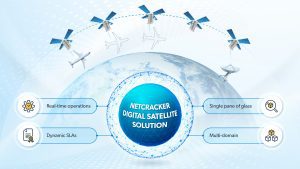Introduction to Satellite Platforms
Satellite platforms play a crucial role in the successful operation of satellites in space. A satellite platform is the structural and functional base that houses and supports the payloads, communication systems, and other essential components of a satellite. These platforms are designed to ensure that the satellite can operate effectively in orbit while providing support for various mission objectives.

Key Components of a Satellite Platform
A satellite platform is typically composed of several critical systems. These include:
- Power Systems: Satellite power systems provide the necessary electricity to operate onboard systems. They often consist of solar panels and batteries, ensuring continuous operation even when the satellite is in the shadow of a planet.
- Thermal Control: Satellites operate in the harsh conditions of space, with extreme temperatures. Thermal control systems are responsible for maintaining optimal operating temperatures for the satellite’s components.
- Attitude Control: To maintain proper orientation in space, attitude control systems help adjust the satellite’s position using gyroscopes, magnetometers, and reaction wheels.
- Propulsion Systems: These systems allow the satellite to move or change its orbit. Depending on the mission, propulsion can be used for orbital insertion, station-keeping, or deorbiting.
- Communication Systems: A satellite platform typically includes high-speed communication systems that allow for the transmission of data to and from Earth.
Types of Satellite Platforms
There are various types of satellite platforms designed for specific missions. Some of the most common include:
- Low Earth Orbit (LEO) Platforms: These platforms are designed for satellites operating in orbits close to Earth, typically at altitudes between 160 to 2,000 km. These satellites are commonly used for Earth observation and communications.
- Geostationary Platforms: Positioned at an altitude of about 36,000 km, these platforms are often used for weather monitoring and communications. They remain fixed relative to a specific location on Earth.
- Medium Earth Orbit (MEO) Platforms: These platforms are used for navigation satellites like GPS. They operate at altitudes between LEO and geostationary orbits.
Importance of Satellite Platforms in Space Exploration
The design and efficiency of satellite platforms are integral to the success of space missions. A well-engineered satellite platform ensures that all subsystems work together to support the satellite’s payload and mission objectives. Whether for communication, Earth observation, or scientific research, these platforms provide the foundation for reliable and effective satellite operations.
Innovations in Satellite Platform Technology
Advancements in materials science, power systems, and miniaturization have led to the development of new and improved satellite platforms. From nano-satellites to larger, more complex geostationary platforms, the technology continues to evolve. Modern satellite platforms are now lighter, more energy-efficient, and capable of supporting a wide range of missions, from commercial applications to space exploration.
The importance of satellite platforms in modern space missions cannot be overstated. They form the backbone of satellite operations, supporting the payloads and ensuring that the satellite functions correctly in the challenging environment of space. As technology continues to advance, satellite platforms will evolve, making space missions more efficient and cost-effective.
